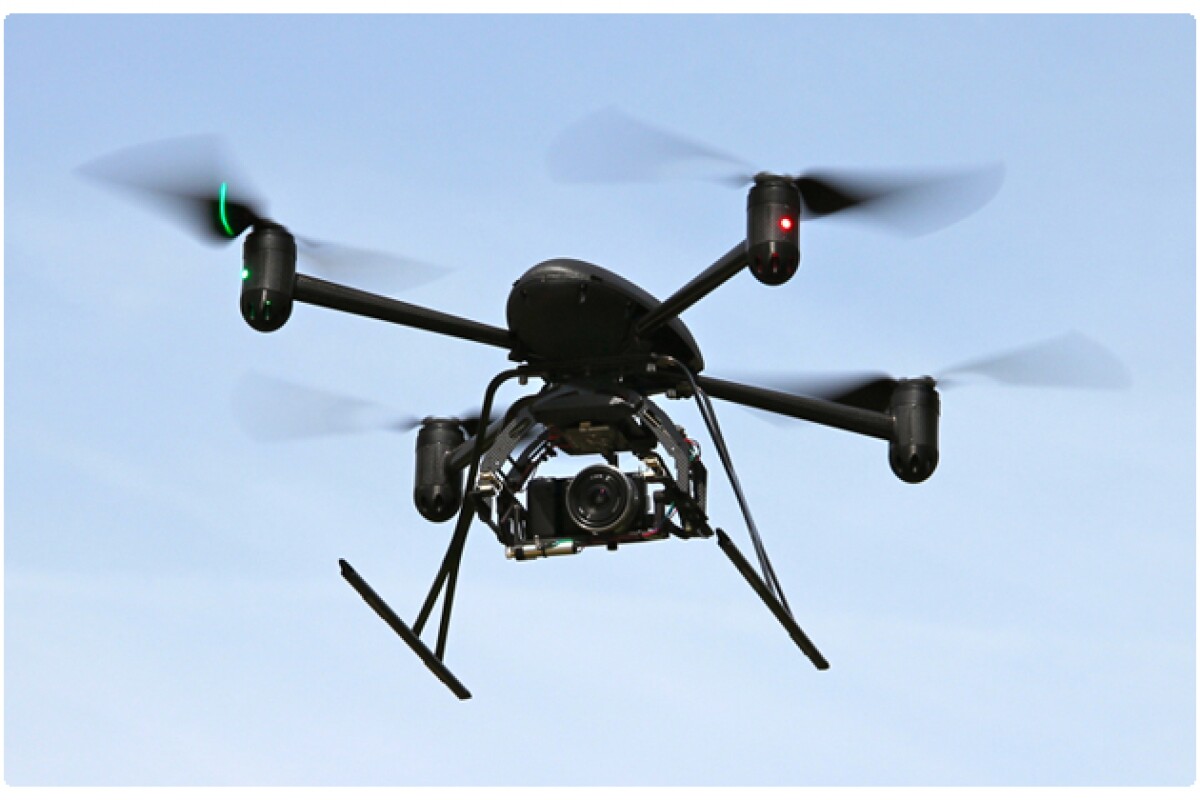While we hear a lot about the ways in which hovering aerial drones can potentially be used to violate peoples’ privacy, it’s always nice to know that they can help us, too. That was the case last Thursday (May 9th), when RCMP from the Canadian city of Saskatoon, Saskatchewan used a remotely-operated quadcopter to locate the victim of a single-vehicle rollover, which occurred in the countryside at near-freezing temperatures.
At 12:20 am, the Saskatoon RCMP first received a report of the rollover, and went out to the accident site to investigate – they were joined at the scene by fire rescue and emergency medical response teams. The car was located, but even after conducting a 200-meter (656-foot) ground search of the area, no occupants could be found.
An air ambulance helicopter was then called in, the crew of which used a night vision system to conduct a larger, aerial search. When that search also proved fruitless, the RCMP brought in Corporal Doug Green, a Forensic Collision Reconstructionist, along with the detachment’s forward-looking infrared (FLIR) camera-equipped Draganflyer X4-ES quadcopter – the drone is made by Draganfly Innovations, which is itself based in Saskatoon.

By 2:10 am, the 25 year-old lone driver of the car made a 911 call from his mobile phone, letting police know that he was cold, and didn’t know where he was. With some help from the phone company, the GPS coordinates of his phone were triangulated, indicating that the call was made approximately 2 miles (3.2 km) south of the accident site.
Green moved to that area, and the X4-ES was relaunched. It picked up three heat signatures on its FLIR, one of which was the injured driver. He was located in a wooded area 200 meters from the site of his phone call, curled in a ball next to a snow bank at the base of a tree. He wasn’t wearing any outdoor clothing, had lost his shoes, and was unresponsive. Ground crews soon reached him, and proceeded to get him a hospital.
According to the RCMP, “Without the UAV [unmanned aerial vehicle] and FLIR, searchers would not have been able to locate the driver until daylight.” For its part, Draganfly Innovations stated, “To our knowledge, this is the first time a public safety agency has saved a life using a sUAS (small Unmanned Aerial System) helicopter”.
Video of the rescue, as shot by the drone’s FLIR camera, can be seen in the video below.
Sources: RCMP, Draganfly Innovations via The Verge






